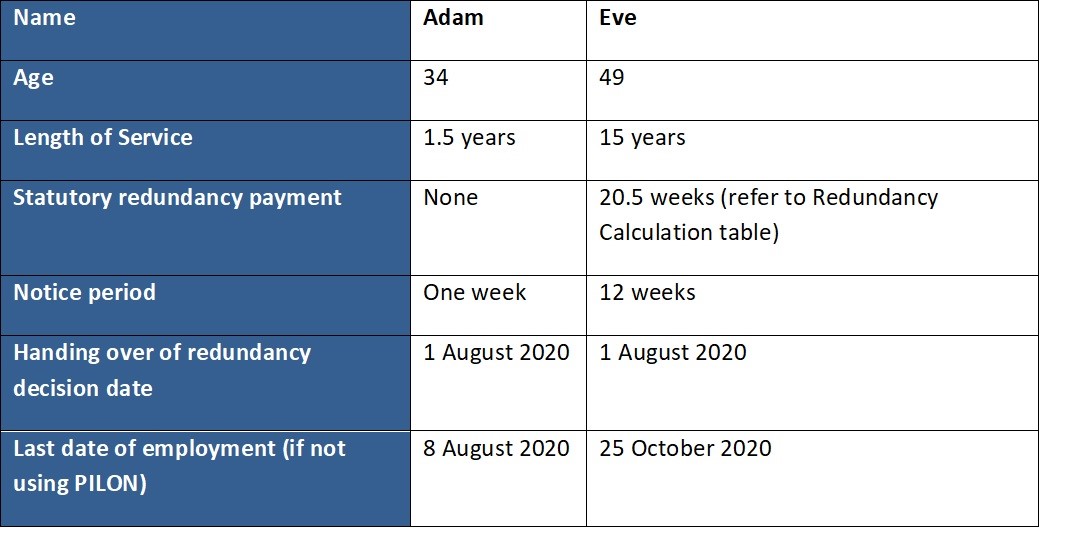If a Company Goes Bust Who Pays Redundancy? Lawful Insights for UK Employees
If a Company Goes Bust Who Pays Redundancy? Lawful Insights for UK Employees
Blog Article
Exploring the Interaction In Between Business Redundancy and Organizational Adaptability for Future Development
In the vibrant landscape of today's business world, the complex partnership between company redundancy and organizational flexibility emerges as a vital variable for continual growth and success. Companies typically face the obstacle of striking a delicate balance in between maintaining a level of redundancy to alleviate threats and cultivating flexibility to react swiftly to the ever-evolving market demands.
Importance of Company Redundancy
Company redundancy is a vital component that boosts business resilience and mitigates operational risks. By incorporating redundancy measures within the organizational framework, firms can much better hold up against unforeseen disruptions and fluctuations in business setting. Redundancy acts as a critical barrier, enabling business to adapt and react properly to unanticipated difficulties without jeopardizing vital operations.
One secret aspect of the importance of company redundancy is its duty in making certain connection throughout times of dilemma. When confronted with sudden changes or emergencies, repetitive systems, resources, or personnel can tip in to keep critical features and stop widespread disruptions. This connection not just safeguards the business's reputation and consumer depend on however also decreases monetary losses and operational downtime.

Techniques for Organizational Versatility

Developing versatile business frameworks that permit for fast modifications to market characteristics and client requirements is necessary for remaining affordable in a quickly progressing atmosphere. By proactively recognizing prospective disruptions and opportunities, organizations can proactively prosper and adjust in an ever-changing service landscape.
Balancing Redundancy and Versatility
Achieving an unified equilibrium between functional redundancy and organizational adaptability is extremely important in navigating the complexities of a vibrant company environment. Redundancy within a firm offers a safeguard, making sure connection and stability in procedures. Nevertheless, an excess of redundancy can cause ineffectiveness and hinder versatility to changing market problems. On the various other hand, organizational adaptability allows companies to react quickly to exterior interruptions and confiscate new possibilities. Striking the best equilibrium between redundancy and versatility is a fragile process that needs a deep understanding of the company's goals, market characteristics, and risk resistance.
To achieve this equilibrium, companies need to conduct routine analyses of their procedures to recognize locations where redundancy is essential for threat reduction and where flexibility can drive technology and development. Applying adaptable frameworks, promoting a culture of continuous knowing and improvement, and encouraging open interaction throughout all degrees of the organization are essential techniques to harmonize redundancy and adaptability effectively. By straightening these 2 essential aspects, business can position themselves for lasting development and success in an ever-changing service landscape.
Study on Adjustment Success
In examining circumstances of effective organizational adaptation, it becomes noticeable that the interaction between functional redundancy Read Full Article and versatility is a defining factor in forming durable companies. One compelling instance research study is that of Netflix. Originally a DVD rental service, Netflix demonstrated impressive versatility by transitioning into a streaming system when digitalization interrupted the industry. By purposefully buying technology and web content development, Netflix not just thrived however made it through in a swiftly developing market. An additional standout instance is Amazon. Starting as an on-line bookstore, Amazon continually adapted its organization design, increasing into varied sectors such as cloud computing and fabricated intelligence. This adaptability allowed Amazon to remain in advance of competitors and satisfy changing consumer needs. Lastly, Adobe offers a significant illustration of effective adjustment. The company moved from marketing software licenses to a subscription-based design, making certain repeating profits streams and boosted customer interaction. These instance studies highlight the value of operational redundancy coupled with organizational flexibility in cultivating long-term growth and competitiveness.
Building Resilience for Future Growth
Structure durability for future development needs a tactical alignment of functional processes with market characteristics and emerging patterns. Companies have to adapt to transforming atmospheres by cultivating a culture of adaptability, advancement, and continuous enhancement.
Moreover, promoting strong connections with stakeholders, such as consumers, workers, distributors, and the neighborhood, is important for weathering unpredictabilities and maintaining depend on and assistance during unstable times. Reliable communication and openness play an essential role in structure strength, as they help assist in and straighten expectations partnership in browsing unpredictabilities.
Additionally, companies require to prioritize knowing and advancement campaigns to upskill employees and furnish them with the essential tools to adapt to altering conditions. By purchasing their workforce, companies can enhance their versatility and dexterity, inevitably strengthening their resilience for sustainable future growth.
Verdict

In the vibrant landscape of today's company globe, the elaborate partnership between business redundancy and organizational versatility arises as a vital factor for continual growth and success. Business frequently encounter the difficulty of striking a fragile equilibrium between preserving a degree of redundancy to mitigate dangers and best site cultivating flexibility to respond quickly to the ever-evolving market needs.To attain this balance, business require to perform regular evaluations of their procedures to recognize locations where redundancy is required for danger reduction and where adaptability can drive development and development.In verdict, the interaction in between company redundancy and organizational versatility link is critical for future growth. Building resilience with a combination of redundancy and versatility will certainly make certain that companies are prepared for the challenges of the future.
Report this page